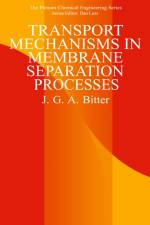av M V Twigg
1 197
I. Electron Transfer Reactions.- 1. Electron Transfer: General and Theoretical.- 1.1. Overview and General Aspects of Reactions in Fluid Media.- 1.2. Electronic Coupling (Ke1).- 1.2.1. The Distance Dependence of Electron Transfer Rates.- 1.2.2. Electric and Magnetic Field Effects on Electronic Coupling and Related Problems of Photoinduced Electron Transfer.- 1.3. The Free-Energy Dependence of Electron Transfer Reactions: The "Inverted Region" Problem.- 1.4. The Effects of Solvent Dynamics.- 1.5. Metal-to-Metal and Ligand-to-Ligand Charge Transfer ("Inter-valence" Transfer).- 2. Redox Reactions between Two Metal Complexes.- 2.1. Introduction.- 2.2. Reactions of Metal Aqua and Oxo Ions.- 2.2.1. Titanium.- 2.2.2. Vanadium and Chromium.- 2.2.3. Iron.- 2.2.4. Molybdenum and Tungsten.- 2.3. Reactions of Metal Ion Complexes.- 2.3.1. Chromium.- 2.3.2. Manganese.- 2.3.3. Iron, Ruthenium, and Osmium.- 2.3.4. Cobalt and Rhodium.- 2.3.5. Nickel, Palladium, and Platinum.- 2.3.6. Copper and Silver.- 2.3.7. Technetium and Rhenium.- 2.3.8. Ytterbium.- 2.4. Reactions with Metalloproteins.- 2.4.1. Introduction.- 2.4.2. Copper Proteins.- 2.4.3. Hemoglobin and Myoglobin.- 2.4.4. Cytochromes.- 2.4.5. Iron-Sulfur Proteins.- 3. Metal-Ligand Redox Reactions.- 3.1. Introduction.- 3.2. Oxygen, Peroxide, and Other Oxygen Compounds.- 3.2.1. Dioxygen.- 3.2.2. Hydrogen Peroxide.- 3.2.3. Alkyl Hydroperoxides.- 3.3. Nitrogen Compounds and Oxyanions.- 3.3.1. Hydrazine, Azides, Hydroxylamines, and Derivatives.- 3.3.2. Oxynitrogen Compounds.- 3.3.3. Amines and Nitriles.- 3.4. Sulfur Compounds and Oxyanions.- 3.4.1. Peroxodisulfate and Peroxomonosulfate.- 3.4.2. Sulfur Dioxide and Sulfite Ions.- 3.4.3. Sulfoxides.- 3.4.4. Alkyl Sulfur Compounds.- 3.4.5. Selenium, Tellurium, and Elemental Sulfur.- 3.5. Halogen, Halides, and Halogen Oxyanions.- 3.5.1. Halogens.- 3.5.2. Halides.- 3.5.3. Oxyhalogen Compounds.- 3.6. Phosphorus, Arsenic, and Oxycompounds.- 3.6.1. Phosphorus Oxyanions.- 3.6.2. Phosphines and Arsines.- 3.7. Inorganic Radicals.- 3.8. Ascorbic Acid, Quinols, Catechols, and Diols.- 3.8.1. Ascorbic Acid.- 3.8.2. Aromatic Diols and Diones.- 3.8.3. Aromatic and Aliphatic Alcohols.- 3.9. Carboxylic Acids, Carboxylates, Carbon Dioxide, and Carbon Monoxide.- 3.9.1. Carboxylic Acids and Carboxylates.- 3.9.2. Carbon Dioxide and Carbon Monoxide.- 3.10. Alkyl Halides.- 3.11. Organic Radicals.- II. Substitution and Related Reactions.- 4. Reactions of Compounds of the Nonmetallic Elements.- 4.1. Boron.- 4.2. Carbon.- 4.3. Silicon.- 4.4. Germanium.- 4.5. Nitrogen.- 4.6. Phosphorus.- 4.7. Arsenic.- 4.8. Oxygen.- 4.9. Sulfur.- 4.10. Selenium and Tellurium.- 4.11. Halogens, Krypton, and Xenon.- 4.11.1. Fluorine.- 4.11.2. Chlorine.- 4.11.3. Bromine.- 4.11.4. Iodine.- 4.11.5. Krypton and Xenon.- 4.12. Oscillating Reactions.- 5. Substitution Reactions of Inert-Metal Complexes-Coordination Numbers 4 and 5.- 5.1. Introduction.- 5.2. Associative Ligand Exchange at Square-Planar Platinum(II).- 5.3. Associative Ligand Exchange at Square-Planar Palladium(II).- 5.4. Ligand Exchange at Platinum(II) by Dissociative Processes.- 5.5. Ligand Exchange at Nickel.- 5.6. Reactions of Planar Ir(I), Rh(I), Au(III), and Cu(II) Complexes.- 5.7. Five-Coordinate Species.- 5.8.TransEffect.- 5.9. Isomerizations.- 6. Substitution Reactions of Inert-Metal Complexes-Coordination Numbers 6 and Above: Chromium.- 6.1. Introduction.- 6.2. Aquation and Solvolysis of Chromium(III) Complexes.- 6.2.1. [Cr(III)(L5)X]n+1Systems (L = OH2, NH3).- 6.2.2. Cr(III)-C Bond Rupture.- 6.2.3. Amine and Other Complexes.- 6.2.4. Dechelation/Chelation Processes.- 6.2.5. Metal-Ion-Assisted Aquation.- 6.2.6. Porphyrins.- 6.3. Formation of Chromium(III) Complexes.- 6.3.1. The Nature of the Cr3+Cation in Aqueous Solution.- 6.3.2. Anation Reactions.- 6.4. Base Hydrolysis.- 6.5. Oxidation and Reduction of Cr(III) Complexes.- 6.6. Isomerization and Racemization.- 6.7. Photochemistry and Photophysics of Chromium(III) Complexes.-...


